Finding and protecting our natural treasures
Story by Katie Jackson; photos by Sakora Smeby
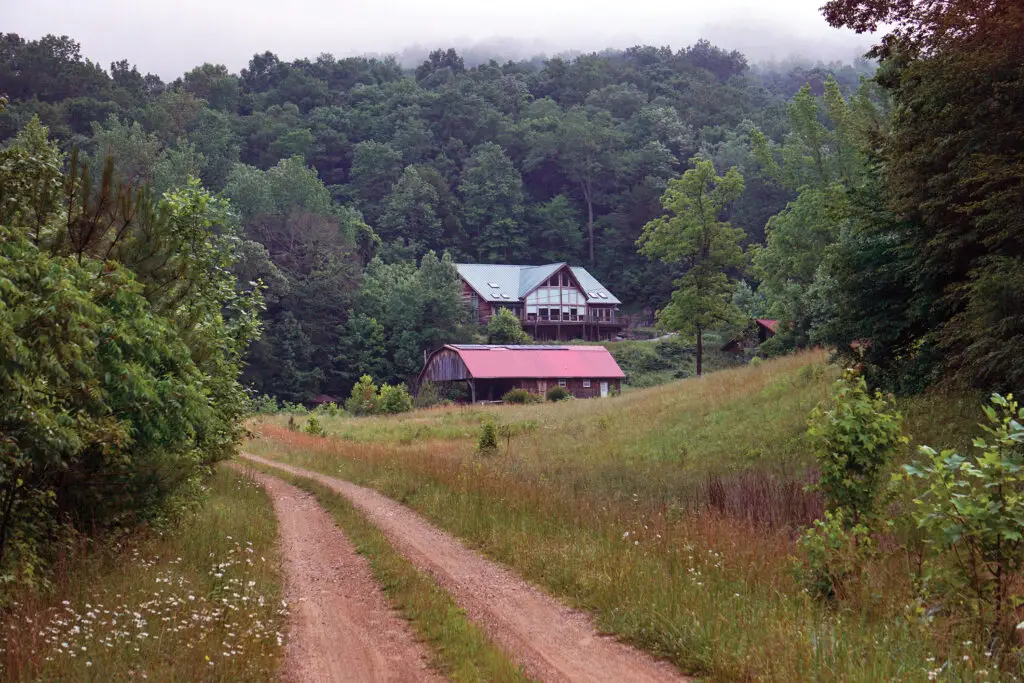
It’s no secret that Alabama possesses a wealth of natural wonders—stunning landscapes, miles and miles of freshwater streams and rivers and an astounding degree of biodiversity just to name a few. But now researchers are discovering a cache of ancient treasures in a remote northeastern corner of the state that may help reveal the secrets of Alabama’s ecological richness and help map its future.
These scientists are members of a multi-disciplinary research team working at the Paint Rock Forest Research Center (paintrock.org), a nonprofit established in 2018 in Jackson County’s Sharp-Bingham Mountain Preserve, a 4,500-acre property owned and protected by The Nature Conservancy.
It is, says PRFRC director and co-founder Bill Finch, an ideal location for the center’s three-fold mission to:
- Explore how forests and other ecosystems work in the face of climate change and human use;
- Train and encourage a new and diverse generation of scientists;
- Develop a new conservation model that integrates human needs with the needs of healthy, resilient landscapes.
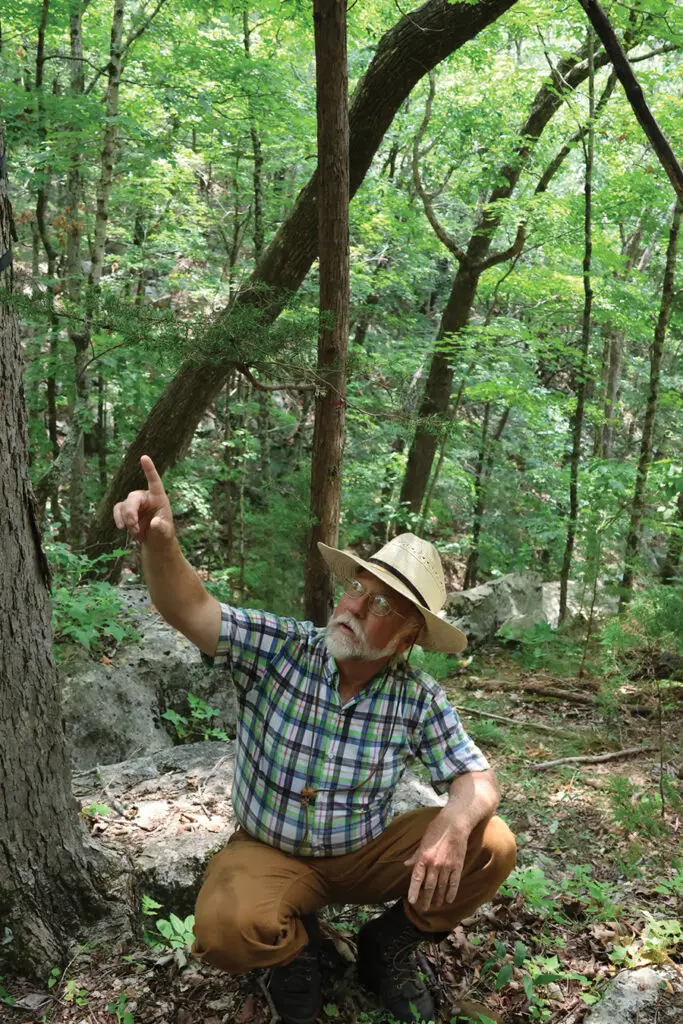
Located at the southern end of the Appalachian Mountains on the heavily forested Cumberland Plateau, the Paint Rock River Valley is formed by steep slopes honeycombed with caves, sinks and underground springs that drop some 1,000 feet down to the Paint Rock River, one of the last free-flowing rivers in the Southeast. This gorgeously demanding landscape is also one of the most biologically diverse places in the Appalachians, home to an amazing number of plant and animal species, some of which are found nowhere else on earth and many of which have yet to be identified or even discovered.
These biological treasures have long been cached in the valley, a climate refugium where they were protected from climate upheavals—including the impacts of the Last Ice Age—and other natural and human-caused disturbances for eons. The valley’s remoteness and its challenging, often inaccessible terrain also limited human activity there, leaving large populations of relict plant and animal species and their ecosystems relatively undisturbed and intact.
Because of this, the Paint Rock River Valley is teeming with untold numbers of terrestrial, aquatic and cave-dwelling organisms. This extraordinary biological diversity coupled with the area’s complex geology and hydrology, “make it a one-of-a-kind laboratory for understanding how species and ecosystems assemble and survive,” Finch says. And he and his collaborators are trying to do just that, starting with deepening their understanding of its trees, one tree at a time.
Understanding our forests
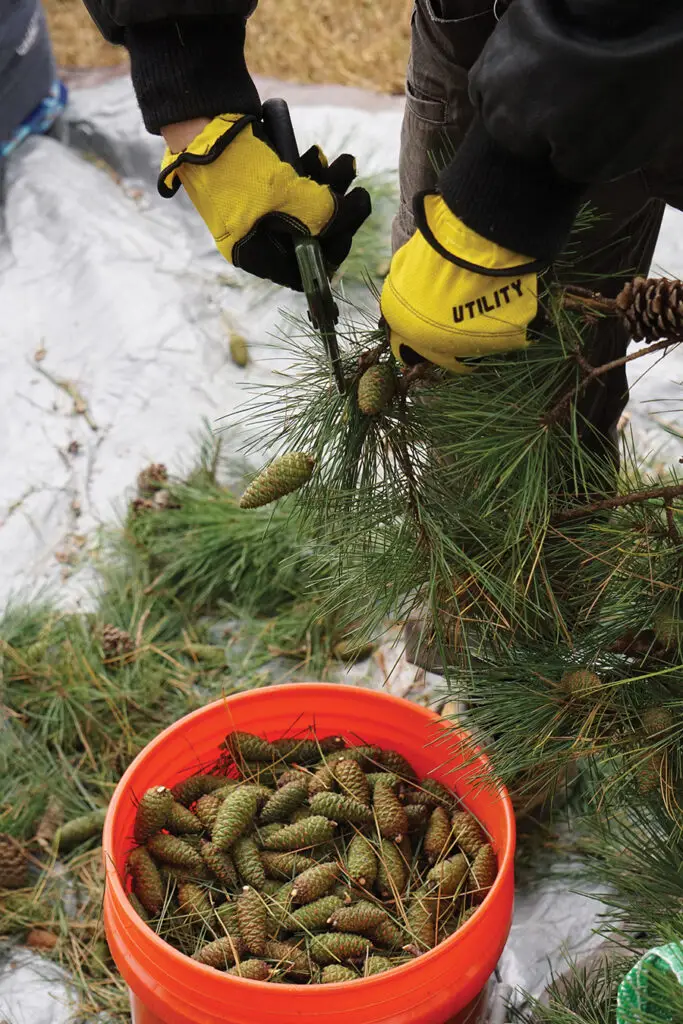
Since 2019, PRFRC researchers have been painstakingly identifying, tagging and mapping every single woody shrub or tree with a stem diameter of 1 centimeter or more (about a pencil’s width in size) on a 150-acre study site. These trees will be continuously monitored over the next 50 years to gauge their growth rates, survivability, ability to capture carbon and to monitor how they respond to changes in climate and carbon dioxide.
The study is part of the Smithsonian Institution’s ForestGEO program, a global network of 78 research sites in 29 countries focused on deepening our understanding of the world’s tropical, temperate and boreal forests. Patterned on a groundbreaking long-term tropical forest dynamics study begun in Panama in 1980, these projects are studying how forests function, how species survive and how climate change is impacting them.
Results from these studies can be used by policymakers and planners to develop future conservation strategies that will help protect the Earth’s forests, which are essential to the health and wellbeing of all life on Earth. That’s because forests provide crucial ecosystem services such as capturing carbon, cleaning our air and water and stabilizing and enriching our soils. They also provide habitat for two-thirds of the Earth’s terrestrial plant and animal species and provide humankind with renewable products, recreational opportunities and other benefits. And, especially crucial today, they are key to the planet’s climate resilience.
Finch, a long-time conservationist and natural historian with a deep knowledge of and passion for the Southeast’s natural treasures, was well-versed in the importance of forests when, in 2008, he helped ForestGEO leaders scout for a new research site in the temperate South. After considering locations in North Carolina, Georgia, Florida and other southeastern states, they soon realized that none were as perfect for the study as Alabama’s Paint Rock River Valley. It would, however, be another 10 years before that research began thanks to the dedication and leadership of Finch and his wife, award-winning conservation photographer Beth Maynor Finch.

Working in partnership with Alabama A&M University and with the encouragement and support of several preeminent U.S. biologists (including the late E.O. Wilson, a celebrated Harvard biologist, naturalist and Alabama native), the Finches established the PRFRC in 2018 and, by 2019, the long-term forest dynamics study was underway.
Now, five years into the study, its research team has censused about 80 acres of the study site, cataloguing more than 50,000 individual stems (they expect to have 100,000 before they are through). In the process, they have identified some 100 different woody plants including maples, hickories, buckeyes, dogwoods, azaleas, buckeyes, oaks and elms, at least 10 of which represent previously unknown species.
“It appears we’ll be helping to redefine the sugar maple group, and it’s very likely we’ll all need to learn the new name of a very large and prominent Cumberland oak,” Finch says. And those are likely just the first of many discoveries yet to be made.
“The truth is, we don’t know precisely how many species we actually have here because so many of the trees defy any current species definition,” he continued, noting they are working with various educational and research institutions here in Alabama (Samford University and the University of West Alabama among them) and across the country to help identify these new-found treasures.

“We simply had no idea we’d encounter so many surprises in one place,” Finch says. And many more will no doubt be found as they study the valley’s caves, sinks, springs, river and other habitats.
In addition to these studies, and for the first time in a century, the center’s staff is also collecting seed from shortleaf pines and native wildflowers and grasses. These can be used to help restore shortleaf pine savannas, one of the Southern Cumberland Plateau’s most endangered ecosystems, and possibly to create a new restoration-based industry for the area.
“We want to be a comprehensive research center,” Finch says, including the “new and diverse generation of scientists” that are part of their overall mission. To accomplish this, the center often hosts students and youth from all backgrounds and from across the globe. A research intern program has also been established allowing aspiring scientists to live and work at the center for months at a time.
To support its interns, scientists, volunteers and the many students, film crews, artists and others who frequently visit the center, the Finches established a 10-acre campus just downhill from the forest research site that provides some 7,000 square feet of residential, lecture and research space, which they hope to soon expand.
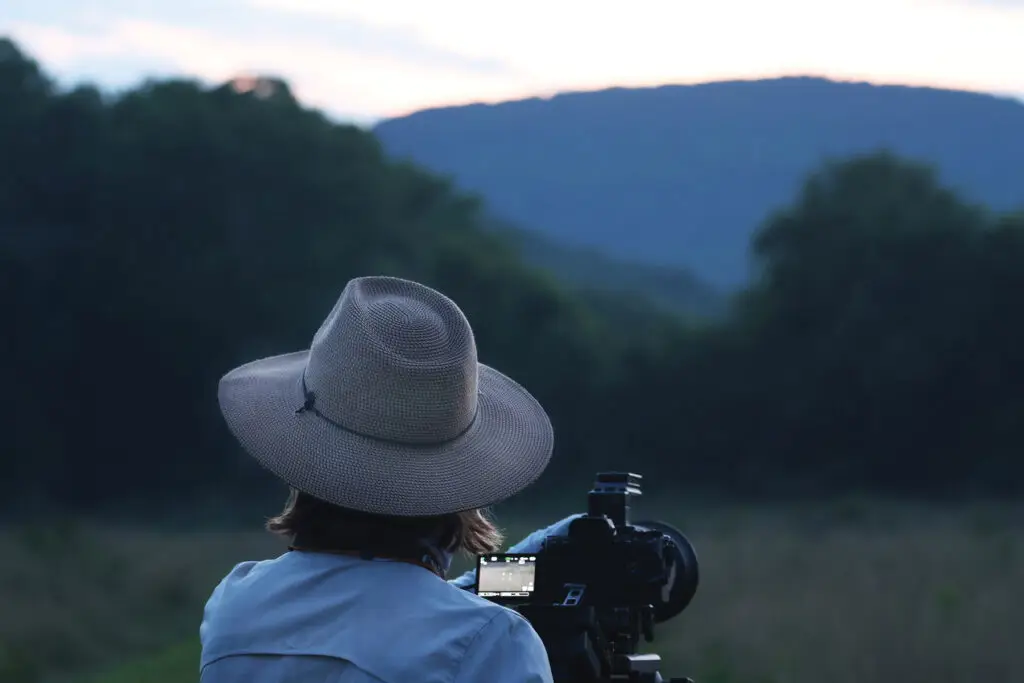
The importance of partnerships
A lot has been accomplished at the center in a short period of time, an achievement Finch credits to its network of partnerships, both local and worldwide.
Partnerships are important to any conservation effort, says TNC State Director Mitch Reid. It is through such collaborations that TNC, which works across the globe to help conserve the land and water, has protected more than 30,000 acres in Jackson County and supported over 40 river projects in the area. Their partnership with the Paint Rock Forest Research Center is a prime example of how mutually beneficial these collaborations can be.
Because the center is within the TNC preserve, it will be protected in perpetuity, assuring that the long-term forest study can continue for 50 years unaffected by outside pressures and changes, such as logging and development. In turn, the center’s work can help TNC develop its conservation work and support TNC’s “Resilient and Connected Landscapes” initiative, an approach that seeks to balance the needs of nature and people to create a climate-resilient planet.
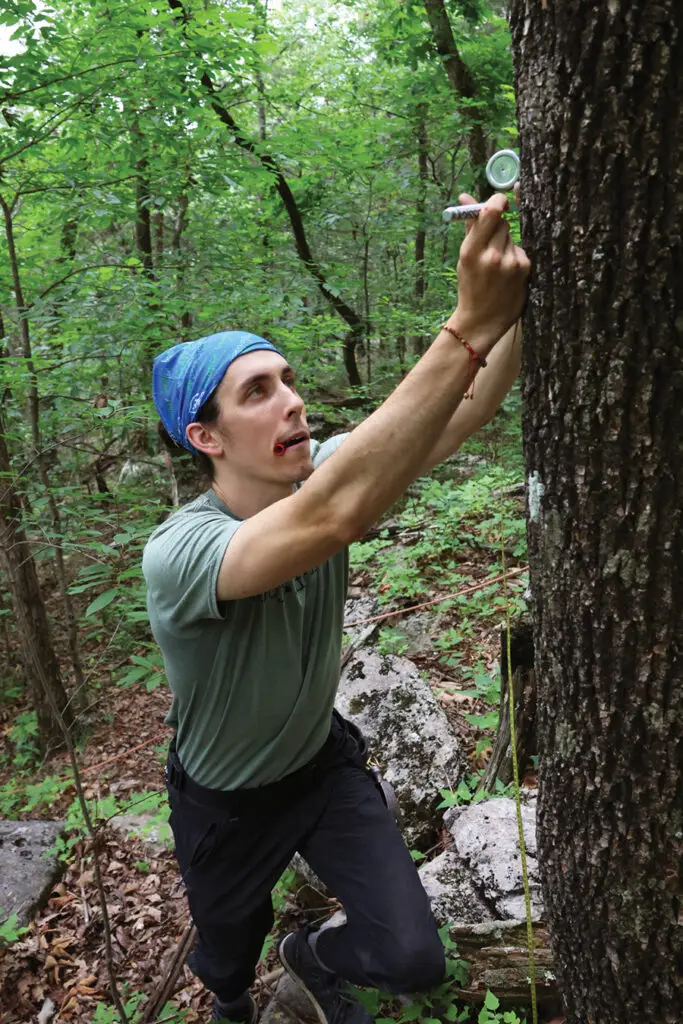
“We’re very focused at the TNC on projects that combine thoughtful human use and enjoyment of the landscape with critical conservation goals,” Reid says. Because of the Paint Rock River Valley’s proximity to one of the fastest growing areas of the state and region—Huntsville/Madison County on through Atlanta and Chattanooga—it offers an exceptional opportunity to develop plans that find that balance and create a model for other conservation efforts.
“In the heart of this rapidly developing area, you still have this emerald jewel that is Jackson County,” he says. “It could, and ought to, be the playground of all these places. If we do our job right by protecting these areas while still providing people access to see and use them, then Jackson County will have something for everyone.”
According to Finch, the PRFRC’s partnerships with TNC, Alabama A&M University and many other universities, organizations and people across the state, nation and world are key to its success.
“We’ve gotten it done because of our partners,” he says. “We’re getting it done because our board members roll up their sleeves whenever we get stuck in the mud, and because of the growing support of our local communities and legislative delegation.”
Through the priceless support of current and future partners and the hard work of its dedicated staff and volunteers, the Paint Rock Forest Research Center will uncover more of Alabama’s natural treasures and help keep them safe for generations to come.




